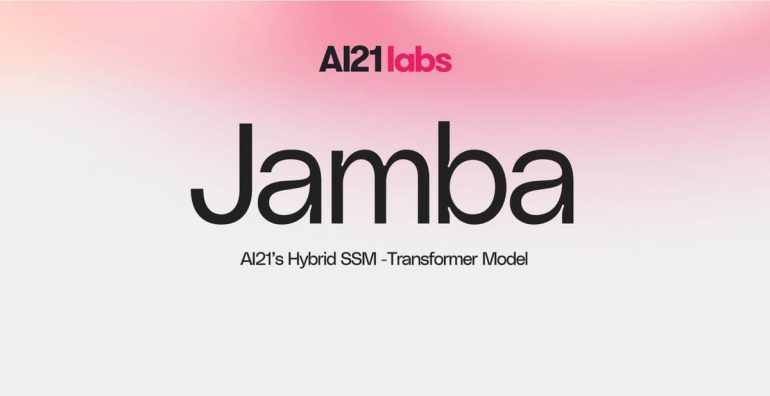- AI21 introduces Jamba, a hybrid model blending Mamba-style SSM with Transformer architecture.
- Jamba boasts unmatched efficiency, throughput, and performance in large language models (LLMs).
- Its hybrid architecture integrates Transformer, Mamba, and MoE layers, optimizing memory and performance.
- Jamba outperforms competitors in its size class with a context window of 256K, setting new benchmarks.
- Scalable up to 140K contexts on a single GPU, Jamba facilitates streamlined deployment and fosters innovation.
- Jamba’s release marks two milestones: integrating Mamba with Transformer and enhancing SSM-Transformer hybrid models.
- Open-source release under an Apache 2.0 license encourages collaboration and innovation.
- Integration with the NVIDIA API catalog as a NIM inference microservice ensures seamless deployment for enterprise applications.
Main AI News:
AI21, a prominent figure in the realm of AI solutions tailored for businesses, has unveiled Jamba, a cutting-edge model embodying the essence of the Mamba-style framework. This innovation seamlessly merges the groundbreaking Mamba Structured State Space model (SSM) with components of the conventional Transformer architecture. Jamba stands as a pivotal leap forward in the evolution of large language models (LLMs), boasting unparalleled efficiency, throughput, and performance.
In revolutionizing the landscape of LLMs, Jamba tackles the constraints inherent in pure SSM models and traditional Transformer setups. Sporting an expansive context window spanning 256K, Jamba eclipses other top-tier models in its size category across a spectrum of benchmarks, establishing a new gold standard for efficiency and performance.
The distinguishing feature of Jamba lies in its hybrid architecture, which amalgamates Transformer, Mamba, and mixture-of-experts (MoE) layers. This fusion optimizes memory utilization, throughput, and performance in tandem. Furthermore, Jamba outshines Transformer-based counterparts of similar magnitude by tripling the throughput on extended contexts. This enhanced capability accelerates the processing of large-scale language tasks, effectively tackling core challenges encountered in enterprise settings.
Scalability emerges as a cornerstone trait of Jamba, accommodating a remarkable 140K contexts on a solitary GPU. This scalability not only facilitates streamlined deployment but also fosters a culture of experimentation within the AI community, encouraging innovative endeavors.
The launch of Jamba heralds two significant milestones in LLM innovation. Firstly, it seamlessly integrates Mamba into the Transformer architecture, presenting a refined hybrid SSM-Transformer model. Secondly, it achieves a smaller footprint and enhanced throughput on lengthy contexts, further amplifying its appeal.
Or Dagan, VP of Product at AI21, expressed enthusiasm about Jamba’s debut, highlighting its groundbreaking hybrid architecture that marries the strengths of Mamba and Transformer technologies. Dagan emphasized that this convergence empowers developers and businesses alike to swiftly deploy critical applications with unparalleled efficiency and scalability, thus driving progress in a cost-effective manner.
Jamba’s release with open weights under the Apache 2.0 license epitomizes AI21’s commitment to fostering collaboration and innovation within the open-source community. Moreover, its integration with the NVIDIA API catalog as a NIM inference microservice streamlines accessibility for enterprise applications, ensuring seamless deployment and integration.
Conclusion:
Jamba’s emergence signifies a significant advancement in the market for large language models. Its hybrid architecture, blending Mamba and Transformer technologies, sets a new standard for efficiency and scalability, empowering businesses to deploy critical applications at unprecedented speeds and cost-effectiveness. The open-source release and integration with NVIDIA API catalog further cement its position as a frontrunner in the AI landscape, driving collaboration, innovation, and streamlined deployment in enterprise settings.

